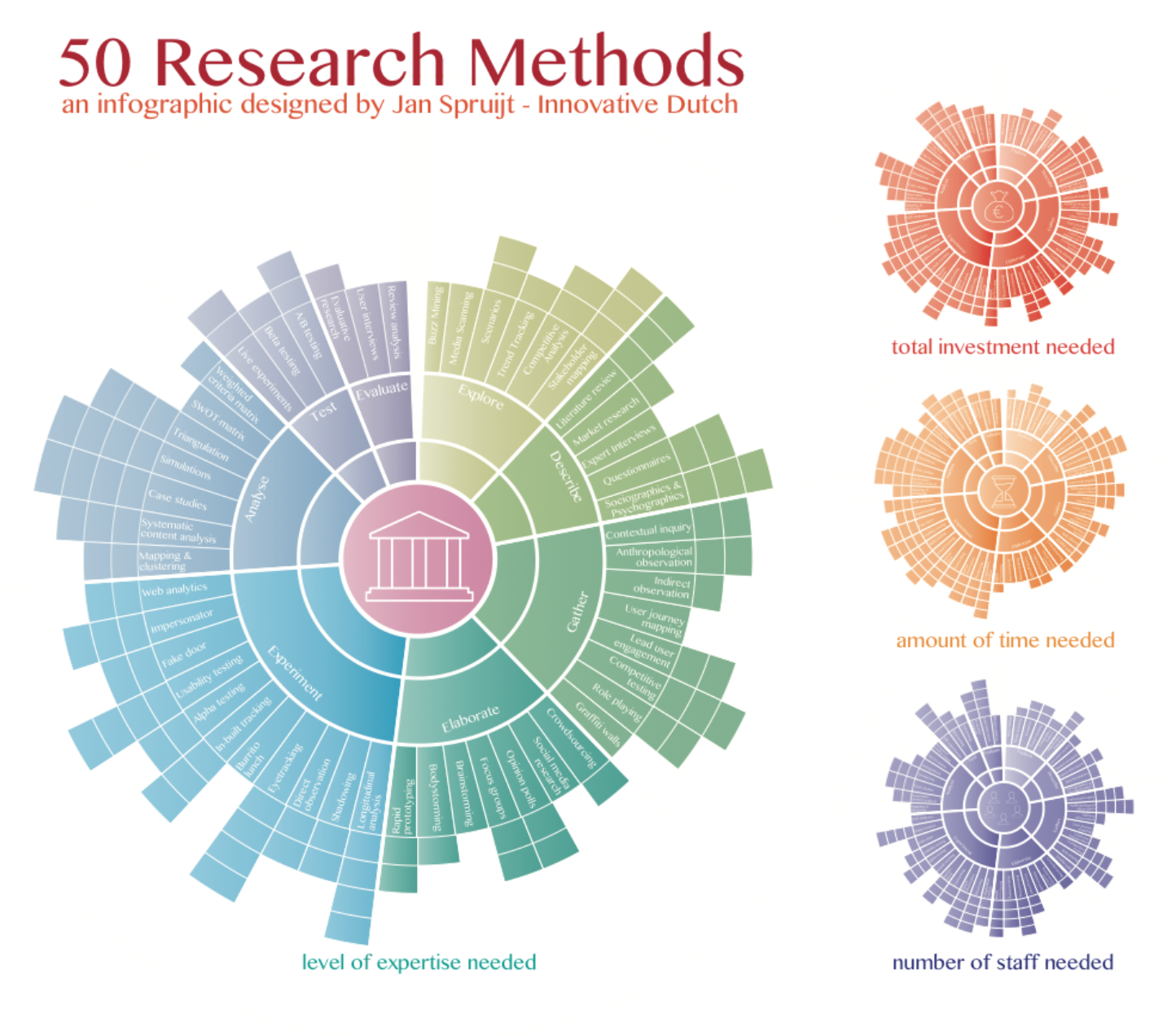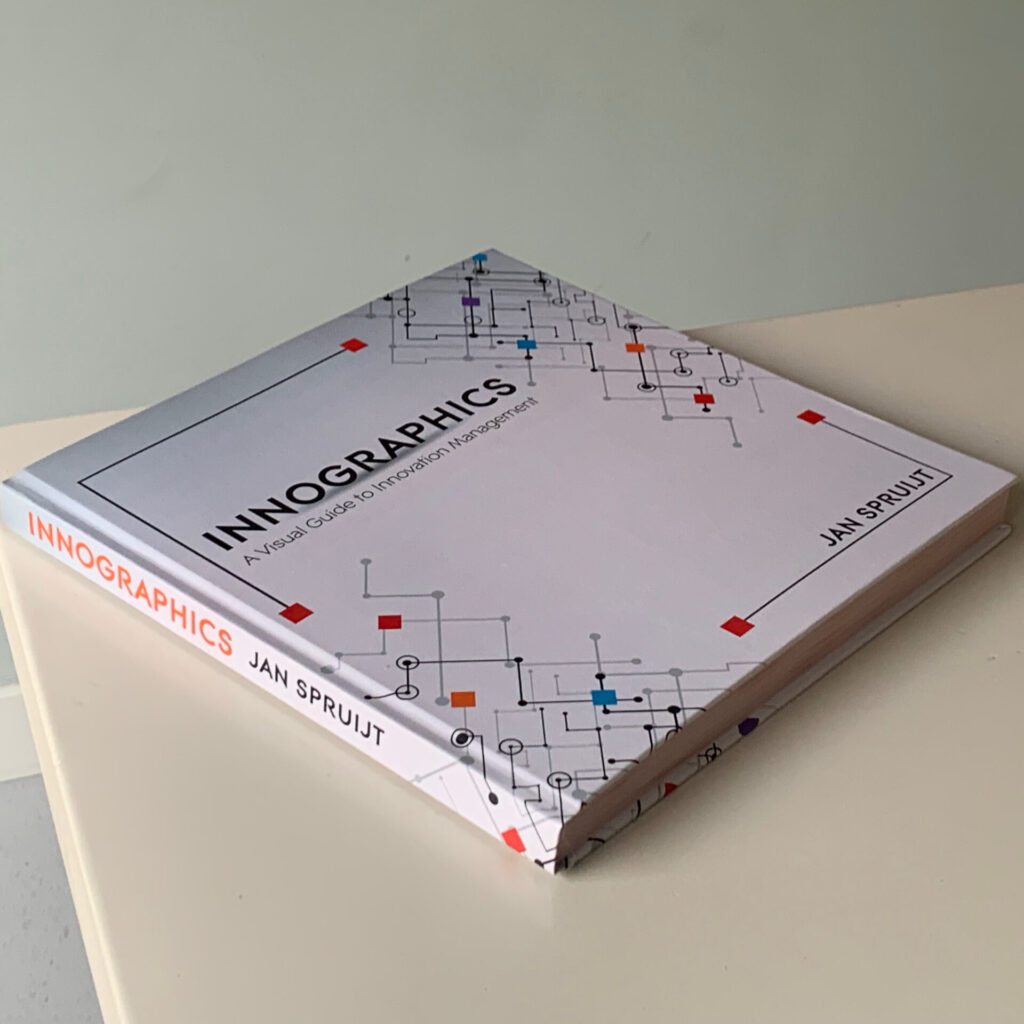A few weeks ago entrepreneur Valer Pop, CEO of LifeSense Group told his startup story to us at the High Tech Campus. After having a successfull career at Holst Centre, Valer decided to start his business with just a small idea: solving unwanted urine loss. He was working on this idea at Holst Centre, but after meeting co-founder Julia Veldhuijzen, Valer and she decided to start up their own business and create specialized medical underwear to help 400 million women worldwide. Early on in the process they gathered an advisor board consisting of 100 women and involved them in the creation process, in both opinion polls and experiments. Right now, LifeSense’s product Carin is an international success. LifeSense’s goal for this year it to be the fastest growing medical company in Europe. Now that’s a goal.
What got to me was the inventive way of using different forms of research in their quest to create their first product. In innovation processes, we usually run into companies that mostly use ‘questionnaires’ and ‘expert interviews’ as part of their ‘research process’. Sometimes, if engineers or psychologists are involved, they use experiments too. Not surprisingly, they found it very hard to get to the real innovation challenge or problem in the market by using these research methods.
Over the years, many different works have been published that deal with creative research methods: there are so many great alternatives for finding that real gap in the market and iterating your product to its final stage. I decided to create an infographic with 50 different research methods. To get to this list I used the following sources:

This infographic is part of the book Innographics: A Visual Guide to Innovation Management
Download a 32-page preview for free
Including 2 infographics, 2 chapters and an overview of 28 innographics.
☑ I agree with opting in for the newsletter, our terms and privacy policy.

Structure
In order to categorise the different research methods, I combined a few sources to create a general ‘research process’. On average we could state that each R&D-trajectory consists of the following steps:
- Explore
- Describe
- Gather
- Elaborate
- Experiment
- Analyse
- Test
- Evaluate
Moreover, based on the Research Toolkit from the Methods Lab, I distinguished four different parameters for each research method:
- Level of Expertise Needed
- Total Investment Needed
- Amount of Time Needed
- Number of Staff Needed
. Based on these parameters, you, as an innovation researcher, could make a elaborated choice on which method to use and why.
50 Research Methods
The following research methods are part of the infographic:
- Buzz Mining: keeping track of all the buzz that comes and goes around a certain topic.
- Media Scanning: actively scanning media to stay up to date about a certain topic.
- Scenarios: using scenario planning methods to forecast different scenario’s.
- Trend tracking:
keeping track of macro-economical and ‘under the iceberg’-technological trends that could impact your business. - Competitive Analysis: systematically comparing products, offerings or methods of competitors and drawing conclusions.
- Stakeholder Mapping: draw extremely detailed stakeholder diagrams and explain the connections to the maximum of your understanding.
- Literature Review: reviewing existing literature to find all known and unknown information regarding your topic.
- Market Research: reviewing market data find all known and unknown insights about the market your in or entering.
- Expert Interviews: interviewing experts in the field to gain general insights on your product (category).
- Questionnaires: conducting questionnaires among potential users (or a population in general) to find interesting insights.
- Sociographics & Pshychgraphics: deeper research into lifestyle, motivational and emotional reasoning of potential users.
- Contextual Inquiry: taking ‘live’ questionnaire in specific contexts to compare own observations with user reactions.
- Anthropological observation: observing potential customers in their natural behaviour (from a distance).
- Indirect observation: using videos (or other tools) to indirectly observe behaviour of potential customers.
- User Journey Mapping: finding and observing all touch points of a certain user with your brand or product.
- Lead User Engagement: finding and involving important (recurring) users in your research process.
- Competitive testing: testing products of competitors to find useful insights.
- Role playing: imitating real-life situations in order to see users reactions.
- Graffiti Walls: putting large sleets of paper to a wall and ask users to answer certain questions over time.
- Crowdsourcing: using the wisdom of the crowd to gain new insights.
- Social Media Research: using social media to research reactions or general sense among users.
- Opinion polls: using structured opinion polls to test hypotheses.
- Focus groups: invite diverse groups of people to discuss the product idea with you.
- Brainstorms: using creative techniques with a diverse group of involved stakeholders to gather new ideas.
- Bodystorming: more active forms of idea generation.
- Rapid prototyping: using rapid, paper, prototypes to sketch and test possible products.
- Longitudinal analysis: a research method that follows users over a longer period of time to see how their behaviour or perspective changes over time.
- Shadowing: actively shadowing users to immerse yourself into their actions and thinking.
- Direct observation: proactively observe consumers when dealing with your product.
- Eyetracking: a computer-technique to follow the eye-movements of users when looking at a computer or mobile screen to analyse your product usage.
- Burrito Lunch: inviting the ‘man on the street’ for a lunch to discuss a product in detail with them.
- In-built tracking: using data analytics built into apps or websites to track user behaviour in detail.
- Alpha testing: testing first drafts of your product with small groups of customers; usually for free or without any charge.
- Usability testing: detailed test to see how users use your product and its features to their advantage.
- Fake Door: creating ‘fake products’ to see if potential are interested (in specific options or add-ons).
- Impersonator: faking an artificial intelligence customer service (phone or email) to test if artificial intelligence would be an option for you.
- Web analytics: using website and search engine data to optimize the marketing process.
- Mapping & Clustering: all different forms of using diagrams to cluster ideas, insights and conclusions in order to come to future suggestions.
- Systematic Content Analysis: using systematic approaches to analyse and quantify for instance interview recordings.
- Stakeholder Mapping: draw extremely detailed stakeholder diagrams and explain the connections to the maximum of your understanding.
- Case studies: a systematic approach that analyses different cases of users or clients that use your product and compare them with each other.
- Simulations: create simulations of alternative product usage to test results and effects.
- Triangulation: using at least three different research methods for the same question to check if the results are reliable.
- SWOT-matrix: plotting the outcomes of previous research in a SWOT-diagram to find future solutions.
- Weighted Criteria Matrix: defining criteria and benchmarking results from different research methods to those criteria in order to find possibly successful solutions.
- Live Experiments: conducting experiments with your product in real-life situation to test something without users knowledge.
- Beta testing: testing a first official version of your product (for regular pricing) to the crowd.
- A/B testing: testing two different version of your product at the same time to find differences and usability.
- Evaluative Research: using research methods with the specific intention of gather feedback on your product of process.
- User interviews: interviewing users to gather feedback about your product and its usage.
- Review analysis: analyse online reviews of your product to find new possible solutions.
Dear Jan
Thank you for this very interesting resource based on the Bloom taxonomy.
Would you be interested in a french translation ?
I would be interested by collaborating with you by providing content enrichment based on use cases.
Best
Amaury
Pingback: ۵۰ روش برای پژوهش نوآورانه – مجمع اقتصاد فن آوری نانو
Jan,
Very interesting research. It would seem Experimenting is a major focus as it should be. Have you compared different companies results against different levels of funding at the stages identified to see what the leading practice is?
Hope you don’t mind I reference your research in my post.
Peter
You Guys are awesome. These infographics are an immense help!
Keep up the great work.